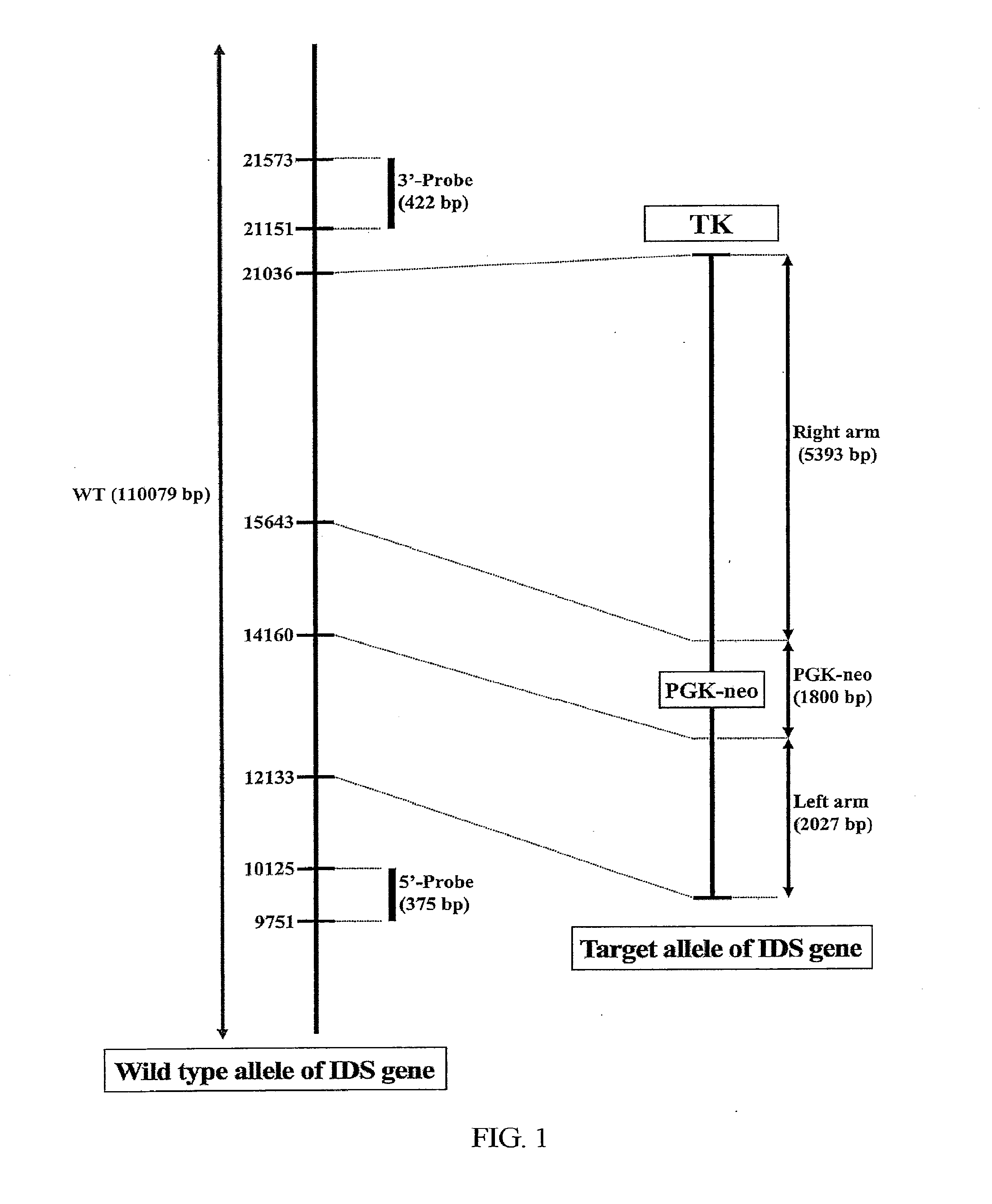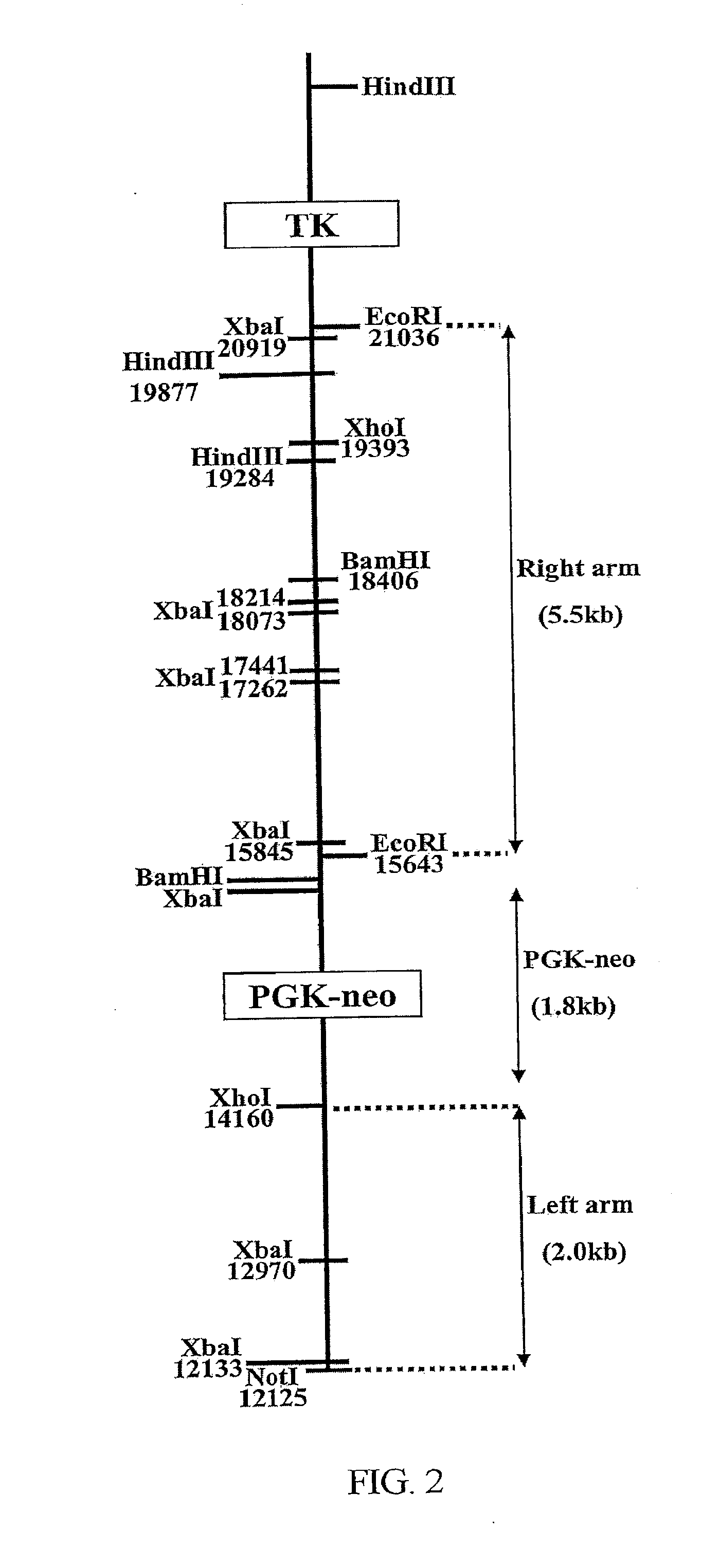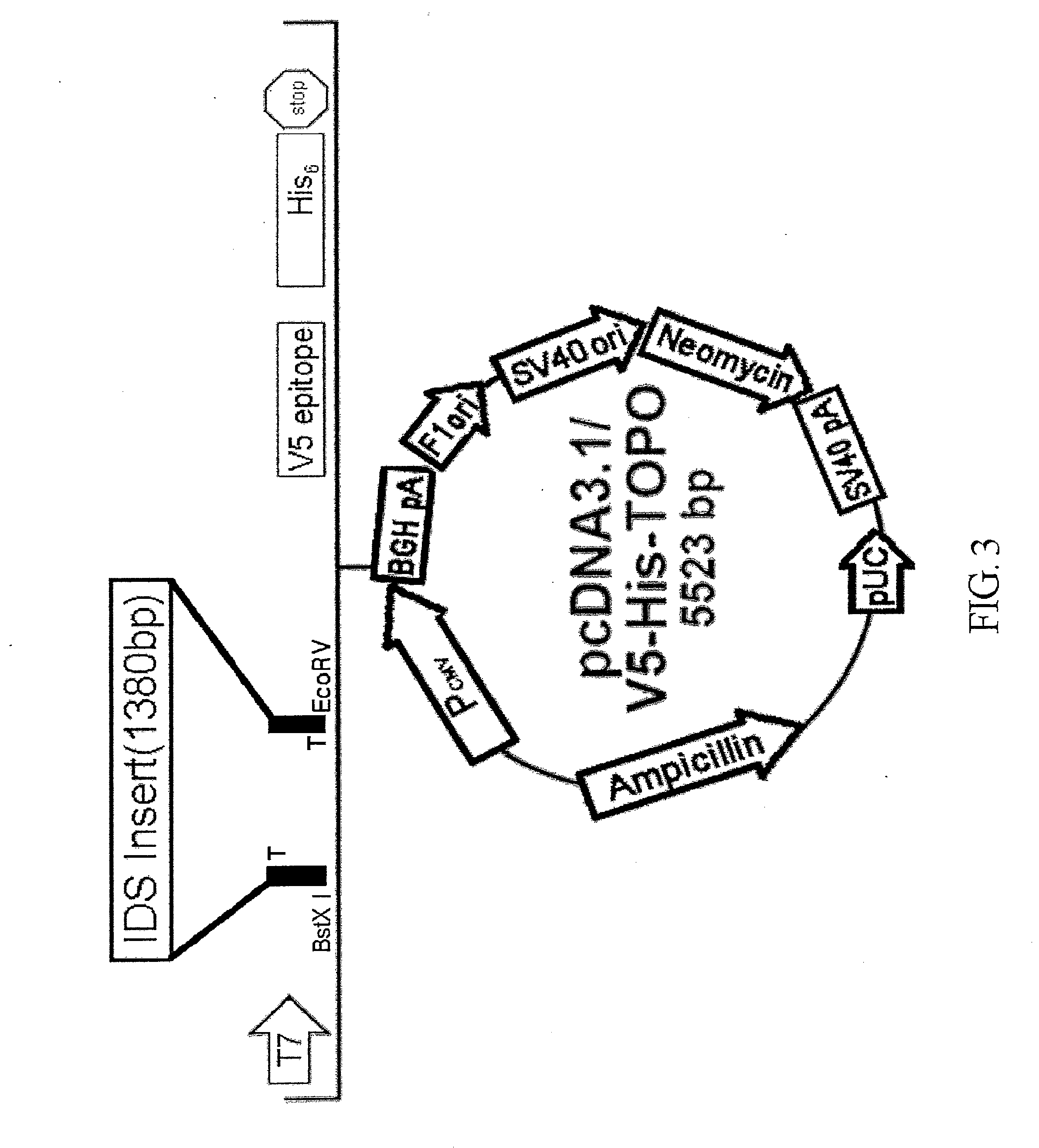Transgenic mouse model for developing enzyme replacement therapy for iduronate-2-sulfatase deficiency syndrome
a technology of iduronate and sulfatase, which is applied in the field of transgenic mouse model for developing enzyme replacement therapy for iduronate2sulfatase deficiency syndrome, can solve the problems of inability to estimate the treatment method of an individual patient, the best model of evaluating therapy cannot be chosen, and the treatment method developed until now cannot show sufficient treatment effect, etc., to achieve maximum efficacy and minimum adverse effects, the effect of assessing the candidate enzym
- Summary
- Abstract
- Description
- Claims
- Application Information
AI Technical Summary
Benefits of technology
Problems solved by technology
Method used
Image
Examples
example 1
Urine Amount of GAG
[0069]The urine amount of glycosaminoglycan (GAG) in a 38 weeks old transgenic mouse was in the range of 135-175 .μg / ml. On the other hand, the urine amount of GAG in a 38 weeks old wild type mouse was in the range of 10-30 .μg / ml. Therefore, the urine amount of GAG of the 38 weeks old transgenic mouse was 5-20 fold of that of the 38 weeks old wild type mouse. It means that the 38 weeks old transgenic mouse could not degenerate the GAG in the body, because the 38 weeks old transgenic mouse did not produce active iduronate-2-sulfatase in the body.
[0070]In case of a 16 weeks old transgenic mouse, the urine amount of GAG of the 16 weeks old transgenic mouse was in the range of 115-140 .μg / ml, while the urine amount of GAG of the 16 weeks old wild type mouse was in the range of 15-40 .μg / ml.
example 2
Weight of Organ in the Knock-Out Mouse
[0071]The growth of liver was extremely retarded in the transgenic mouse. Further, the growth of spleens and lungs in the transgenic mouse was also retarded compared to those of the wild type mouse.
example 3
Histological Analysis of Liver and Kidney in the Knock-Out Mouse
[0072]In the liver and kidney of the transgenic mouse, a lot of glycosaminoglycan (GAG) was accumulated in the lysosomes of these organs. Further, the growth and development of these organs in the transgenic mouse were shown to be retarded.
[0073]In case of the liver, the following pathological characteristics were shown. Lysosome-laden Kupffer cells are readily found at 4 weeks of age with very little evidence of significant hepatocyte storage. By 10 weeks of age, further progression of storage within the reticuloendothelial system has occurred and there is now evidence of significant hepatocyte vacuolation. At this age 20 to 30% of the cytoplasm of the hepatocytes appear to be taken up by lysosomes, as contrasted to very few discernible lysosomes within normal liver samples.
PUM
 Login to View More
Login to View More Abstract
Description
Claims
Application Information
 Login to View More
Login to View More - R&D
- Intellectual Property
- Life Sciences
- Materials
- Tech Scout
- Unparalleled Data Quality
- Higher Quality Content
- 60% Fewer Hallucinations
Browse by: Latest US Patents, China's latest patents, Technical Efficacy Thesaurus, Application Domain, Technology Topic, Popular Technical Reports.
© 2025 PatSnap. All rights reserved.Legal|Privacy policy|Modern Slavery Act Transparency Statement|Sitemap|About US| Contact US: help@patsnap.com



